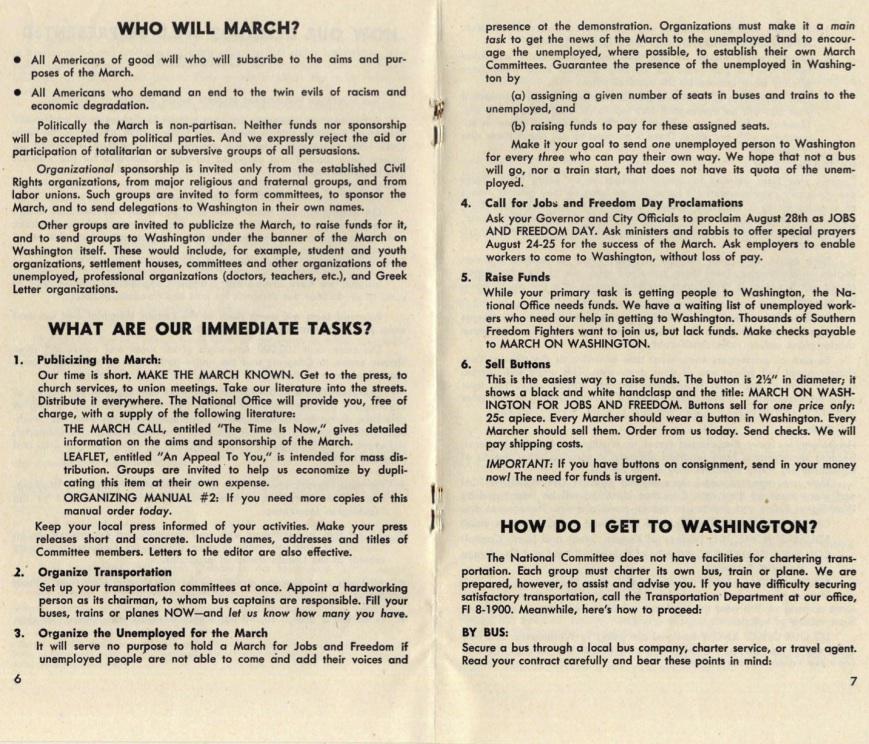The Vault is Slate’s history blog. Like us on Facebook, follow us on Twitter @slatevault, and find us on Tumblr. Find out more about what this space is all about here.
Getting more than 200,000 people to and from the nation’s capital for the 1963 March on Washington for Jobs and Freedom was a huge organizational feat. These pages from the organizing manual for the March show how the national committee managed to nail down the logistical details in the weeks before the event.
Many commemorations of the march have noted that its original goals, which included the right to fair and full employment as well as an end to racial discrimination, have been forgotten. The booklet shows how central the economic justice imperative was to the marchers’ mission. Half of the organization’s demands were related to employment. (You can hear chief organizer Bayard Rustin reading a slightly abridged list of these demands to the crowd, and the marchers responding with cheers, here. )
Organizers put these ideals into practice by emphasizing the necessity for local organizations to fund unemployed workers’ attendance at the march: “It will serve no purpose to hold a March for Jobs and Freedom if unemployed people are not able to come and add their voices and presence at the demonstration,” the organizers wrote. “We hope that not a bus will go, nor a train start, that does not have its quota of the unemployed.”
As the booklet shows, Rustin and the national committee made it their goal to get the protestors in and out of DC in one day. In the name of simplifying logistics, they strongly discouraged attendees from staying in the area overnight. In the end, many endured two back-to-back overnight bus or train trips, with a day marching outdoors sandwiched in between. The organizers knew these strenuous conditions might lead to illness, and worried that restaurants and facilities would be few and far between; to that end, the manual begged attendees to pack healthful box lunches, get rest, and drink water.
You can see all pages of this manual, as hosted by the Tulane University online collection “Print Culture of the Civil Rights Movement, 1950-1980,” here. Thanks to the Amistad Research Center’s Andrew Salinas for his help.

Final Plans for the March on Washington for Jobs and Freedom. Via Tulane University’s Print Culture of the Civil Rights Movement, 1950-1980.

Final Plans for the March on Washington for Jobs and Freedom. Via Tulane University’s Print Culture of the Civil Rights Movement, 1950-1980.

Final Plans for the March on Washington for Jobs and Freedom. Via Tulane University’s Print Culture of the Civil Rights Movement, 1950-1980.

Final Plans for the March on Washington for Jobs and Freedom. Via Tulane University’s Print Culture of the Civil Rights Movement, 1950-1980.